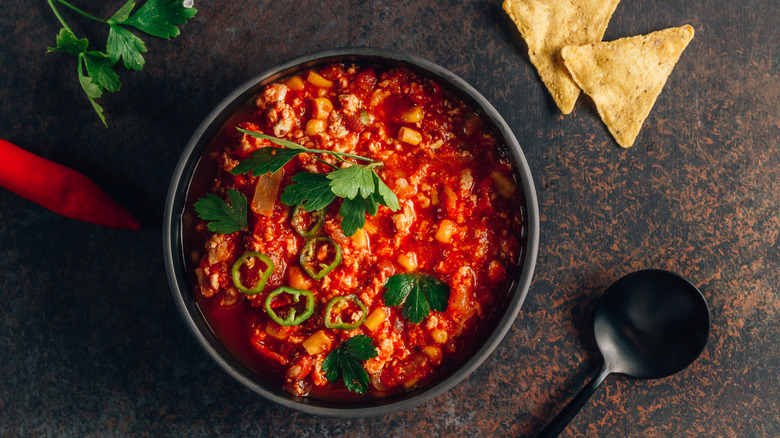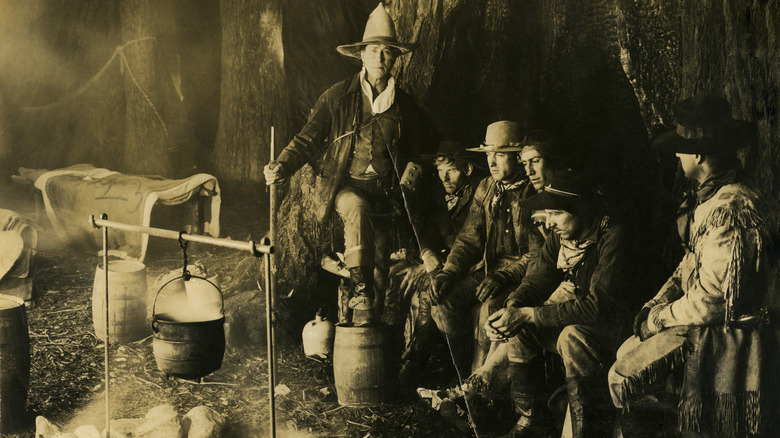How Chili Con Carne Became Texas' State Dish
Chili con carne is perhaps the most famous regional chili of all. Sumptuous bits of beef, a scarlet red broth of chili peppers and onions, all balanced with sweet yellow corn kernels, lacking the starchy beans characteristic of most chili varieties. And, it's the quintessential dish of Texas: In 1977, chili was actually written into the state legislature as the official State Dish of Texas. The decree includes a quote from President Lyndon B. Johnson saying that all other non-Texan chilis are "weak, apologetic" attempts at the meaty, spicy stew. As part of its reasoning for the decision, the resolution cites that San Antonio, Texas had been host to the International Chili Cook-Off since 1967. But the truth is that chili con carne and its ties to Texas stretch much farther back than this event.
Given Texas' proximity to Mexico and the dish name, it's usually assumed chili con carne, affectionately referred to as a "bowl of red" in the resolution, is just another Tex Mex specialty, like fajitas and cheesy enchiladas. That may be part of the truth, but given that even hundreds of years ago Texas was a true melting pot, that story is perhaps a bit simple. There are many theories about how chili con carne became the official dish of Texas. The truth is that just like Texas, it's likely a blend of stories, cultures, nationalities, and of course, chili recipes.
Who brought chili con carne to Texas?
Texas food historian Robb Walsh believes that chili con carne didn't make its way to Texas through Mexico, but through Canary Island immigrants, an autonomous Spanish archipelago off the coast of North Africa. A few Canarian families immigrated to San Antonio in 1731 and with them brought cuisine rich with garlic, chili peppers, onions, cumin, and slow-cooked meat that Walsh says mirrors the North African Moroccan-style cooking. These ingredients are still key to a classic Texas chili con carne. Canarian women were deemed "chili queens" and doled out the dish in San Antonio's military plaza starting in the 1860s. Walsh has described these chili stands as the 1800s equivalent to taco trucks.
Historian Everette Lee DeGolyer, on the other hand, believes the dish gained popularity with gold-seeking forty-niners and Mexican cowboys on the cattle trail going west. DeGolyer has highlighted a journal entry from one such gold hunter named George W. B. Evans sometime between 1949 and 1950. He wrote that thanks to the lard and spices, the cut and pounded beef would stay preserved throughout a long journey. "A small pinch of this meat, thrown into a pan or kettle of boiling water with a little flour or corn-meal thickening, will satisfy the wants of six men at any time," he said of the meat-heavy, spiced soup. This also sounds a remarkable deal like classic Texas con carne. Both of these theories are emblematic of the state's storied international history and cuisine.

